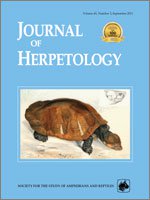In some salamander species, as well as various other vertebrates, iron-rich molecules are sequestered in the enamel and enameloid layers of the crowns of teeth. In adults, the presence of iron can be detected easily because the cusps are often tinted orange-brown. However, visual confirmation is not possible in embryos or larvae. Consequently, the ontogenetic stage during which iron is first deposited in teeth is not known. We used scanning electron microscopy and energy dispersive X-ray spectroscopy to examine the teeth of embryonic and larval Streamside Salamanders, Ambystoma barbouri, to determine the earliest developmental stage during which iron can be detected in teeth and to quantify the relative iron concentration along the length of the enamel cap. Iron was present in first-generation teeth of embryos when individuals were still acquiring nutrients from yolk, suggesting that yolk, rather than diet, was the source of iron deposited in early generation teeth of salamanders. Furthermore, as in adults of other species of salamanders, the concentration of iron decreased from the apex to midshaft to base of teeth in embryonic and larval A. barbouri.
How to translate text using browser tools
1 September 2011
Early Iron Deposition in Teeth of the Streamside Salamander, Ambystoma barbouri
Michael A. Anderson,
Brian T. Miller
ACCESS THE FULL ARTICLE

Journal of Herpetology
Vol. 45 • No. 3
September 2011
Vol. 45 • No. 3
September 2011




